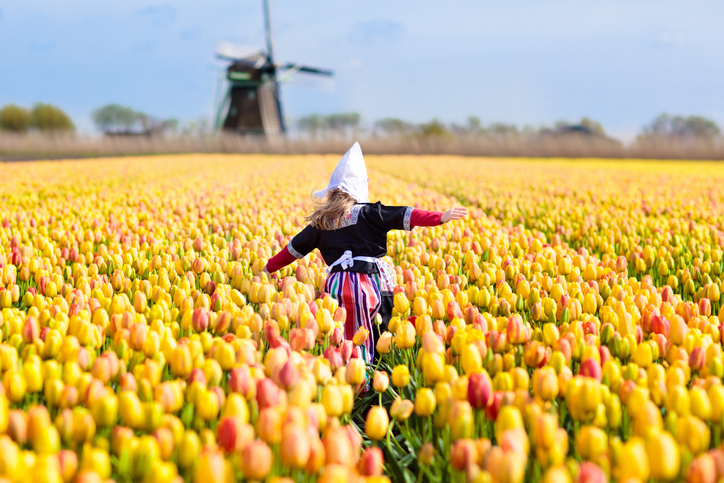With the arrival of spring and good weather, we began to look for new destinations to make a break that is worthwhile. On this occasion, from LookOut Pro we listed seven reasons to travel to Holland in 2019:
1. THE 350TH ANNIVERSARY OF REMBRANDT’S DEATH
In 2019, the Netherlands will spend the year celebrating ‘Rembrandt and the Dutch Golden Age’ to commemorate that three and a half centuries have passed since the painter’s death. Art galleries all around the Netherlands will pay tribute to the prolific master and other contemporary artists who were part of the prosperous historical period known as the Dutch Golden Age (17th century).

Leiden will be one of the central locations for anniversary celebrations, as it was where the painter spent his childhood and adolescence, where he learned how to paint, and where he created his first masterpieces. In fact, Museum De Lakenhal Leiden is preparing a large-scale exhibition that will bring together Rembrandt’s first works (under the title ‘Young Rembrandt’), including one of the artist’s best-known early works: Brillenverkoper (‘A Pedlar Selling Spectacles’, 1624).
2. NEW ‘CHEESE EXPERIENCE’ IN THE CITY OF GOUDA
Gouda is synonymous with cheese. This city is located in the region known as the “Green Heart of Holland”, and its history is inextricably linked to this iconic Dutch cheese. Curiously though, the cheese isn’t produced in the city itself, but instead in numerous farms in the surrounding county.
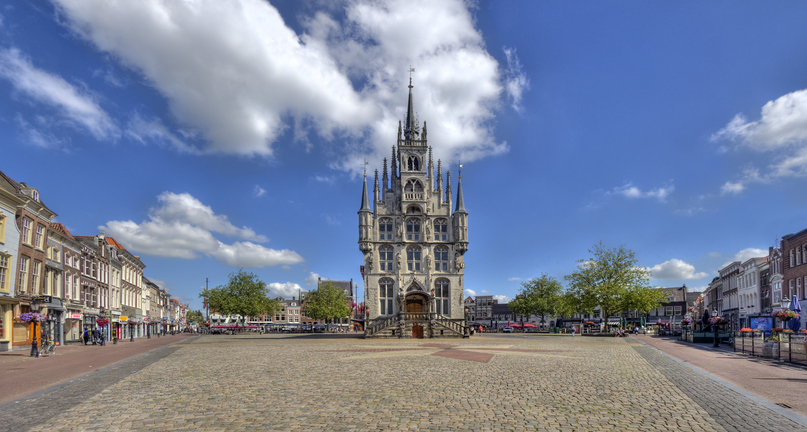
Gouda’s cheese history began when the city received the rights to sell cheese and producers arrived from surrounding towns to the building where the cheeses were officially weighed before being sold in the main square. The traditional cheese selling process is still recreated today at the ‘cheese market’, which is held during the summertime.

A new attraction will open its doors in spring 2019—the “Cheese Experience”. The new attraction will be held in a former cinema, which does not aim to be a museum or educational centre, but rather a dedicated centre showing the history of Gouda cheese and how it is produced. Interactive cow pastures, 360 videos, quirky questionnaires, interactive displays, and even the chance to virtually milk a cow are among the highlights. Visitors can also taste the cheese itself, and there will be a café where you can try all the different varieties of Gouda cheese.
3. ROTTERDAM TAKES ANOTHER STEP TOWARDS SUSTAINABLE DEVELOPMENT WITH A NEW FLOATING SOLAR PARK
In 2019, Rotterdam City Council will build a solar park on the waters of the Maas river at the old port of Rijnhaven. A total of 3770 solar panels will generate clean solar energy in a solar park shaped in concentric waves. The park will be developed by the same art design company that created the impressive psychedelic interior of the Markthal. The park will feature special lighting at night to make the staging even more spectacular.
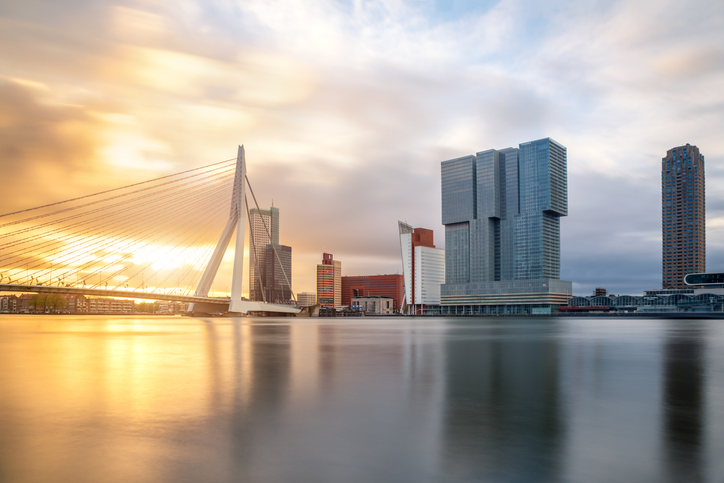
Solar energy is one of the main priorities in Rotterdam city’s energy transformation plan, in order to create clean energy even in unexpected places, like floating on water. The aim is to reduce emissions by 49% before 2030, and this park is one of several projects focusing on this goal. The project will be finalised in 2019, and the City Council has created a crowd-funding campaign that will allow inhabitants to contribute towards its construction by buying solar panels.
The solar park is the latest addition in a line of floating projects that have been developed over the last few years in the port city: a floating farm (which will open in 2019) was added to the floating forest Bobbing Forest, alongside the recently inaugurated floating park made of recycled plastic reclaimed from the sea. These projects are part of a comprehensive plan to build a safer and more resilient city to face the challenges posed by climate change.
4. A NEW NATIONAL PARK ON LAND RECLAIMED FROM THE SEA
New land (Nieuw Land) is the name of the new national park located in the province of Flevoland, the most recent province in the country, which owes its existence to closing off the Ziuderzee bay to create the largest polder in the world. It is made up of four nature reserves (Oostvaardersplassen, Lepelaarplassen, Markermeer and Marker Wadden), and while each one is unique, they all have something in common: they were artificially created by human intervention, and they’re six metres below sea level.
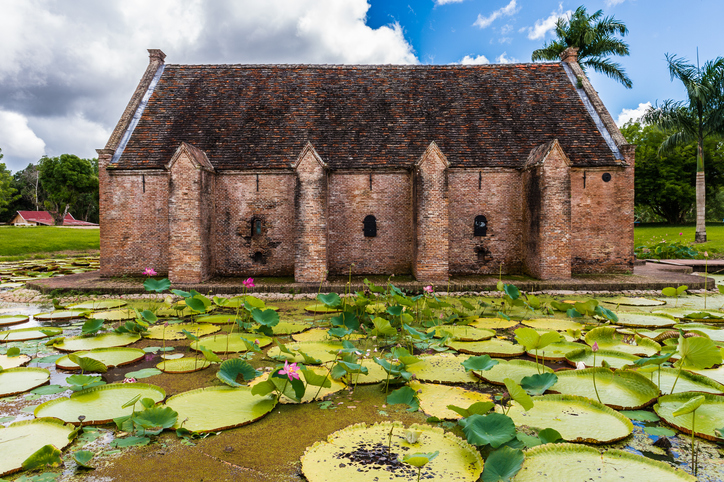
The area around the Oostvaardersplassen lake has an extraordinary variety of animals, including wild horses. Lepelaarplassen is a wetland that has grown from what used to be the seabed, which is certainly unusual, and the area is home to numerous bird species. Lastly, the nature reserves around Marken lake, (Markermeer), one of the biggest lakes in Europe, include an artificial archipelago with areas of marshland created thanks to the sediment that has built up in the lake over the last few decades.
The first of these islands has been open to the public since September 2018. The finished project aims to restore this natural space of over 100km2 and encourage biodiversity. “Nieuw Land is not only a union of natural landscapes, it is also testimony to the relationship between the Dutch and their surroundings,” said Minister for Agriculture Carola Schouten on the new park.
5. VAN GOGH’S INNER CIRCLE
Vincent Van Gogh was a man with many passions: for life, for art and for nature. Despite his tumultuous relationships throughout his life, he was held in very high regard by his friends and family.
The exhibition “Van Gogh’s inner circle: friends, family and models” reveals unknown aspects of the tormented and solitary artist, thanks to people who played key roles in his artistic activity and private life, during his stay in Brabant and the south of France.
Visitors will have the opportunity to get to know Vincent Van Gogh through confidential personal documents: the letters he wrote, the sketches that later turned into timeless masterpieces, and portraits and drawings dedicated to his inner circle of friends and family.
The exhibition organised by the Noordbrabants Museum offers a unique perspective on Van Gogh’s personal life and includes approximately 90 works of art from museums such as the National Modern and Contemporary Art Gallery in Rome, the Chicago Institute of Art, the Kröller-Müller Museum in Otterlo and the Van Gogh Museum in Amsterdam.
6. ADDING STARS TO DUTCH CUISINE
Michelin presents the 2019 edition of its famous guidebook with new surprises for Holland, once again showing the potential of the country’s wine and cuisine. Gwendal Poullennec, international director for the Michelin guide, confirmed the results: “This is a particularly good year for the Netherlands, and our inspectors were impressed by the high level of the chefs who already stood out in previous years. These young chefs, sometimes inspired by colleagues who are further on in their career, contribute to an increasingly high level of Dutch cuisine in terms of creativity, innovation and flavour”.
With two restaurants that now have two Michelin stars and twelve new stars, the 2019 Michelin guide has now awarded a total of 110 restaurants with a Michelin star. “Sabero” and “Pure C” have now joined the category of two-star restaurants, bringing the total up to 18.
Nico Boreas opened “Sabero” in Roermond last spring, and it immediately stood out for its technical finesse and sensitivity: the restaurant confirms Boreas’ position as one of the top Dutch chefs.
At “Pure C” in Cadzand, the other new two-star restaurant, excellence can be found right on your doorstep: the creative union between seafood and the region’s gastronomic treasures re-imagined by chef Syrco Bakker have been an undoubted success.
7. AN ARCHITECTURAL ICON FOR TILBURG
This place, where Van Gogh received his first drawing lessons, has a history that is deeply connected to the textiles industry and has seen an architectural revolution over the last few years.
The latest addition is LocHal, an old locomotive hangar from the Dutch National Railway Network transformed in a new social and leisure centre for the city. The building houses what some have called “the bookshop of the future”, a regional centre for art and culture, a space for creative businesses, laboratories focused on new technology, gamers and cuisine. There is also an impressive railway-inspired café with an interior design that nods to the city’s textile past. The Dutch studio Mecanoo was in charge of the interior design for the new space.
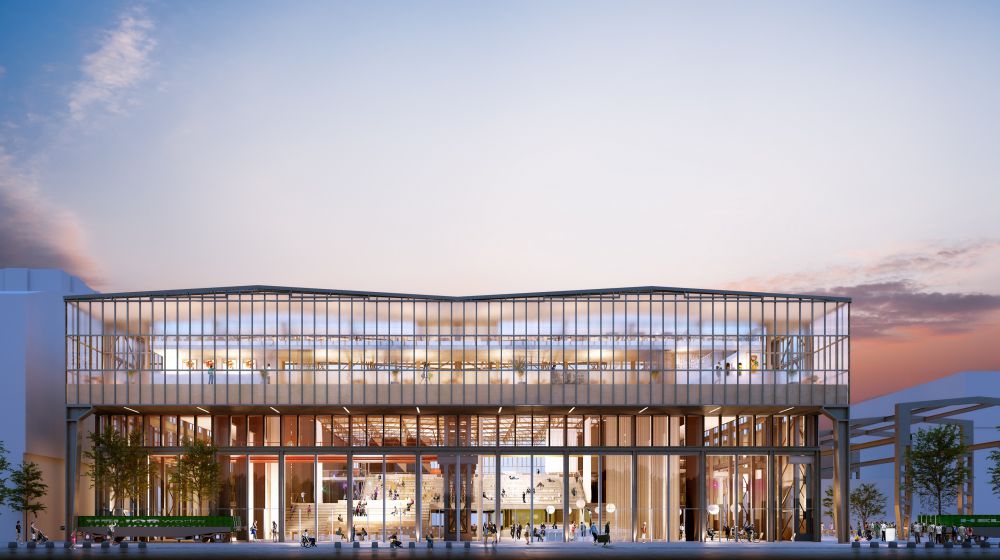
This modern project is part of a comprehensive plan to transform the Spoorzone area, the former railway district, into one of the most vibrant neighbourhoods in the city. Several buildings in the area, including the one where LocHal is housed, have been recognised as national monuments and a second use has been allowed so they can be conserved and protected.
This transformation continues along the lines of other projects in the area, like the EVE complex – a restaurant, market and wine shop located in a former warehouse – and Kopelhal, the previous workshop for NS (the Dutch railway company) which currently hosts a number of different events and music festivals.
This architectural transformation comes in addition to projects that have been completed over recent years in industrial buildings in other parts of the city, such as the one in De Pont Museum (a former wool factory) by architects Benthem Crouwel, and the Textile Museum (old textile factory) by Cepezed Architects.



